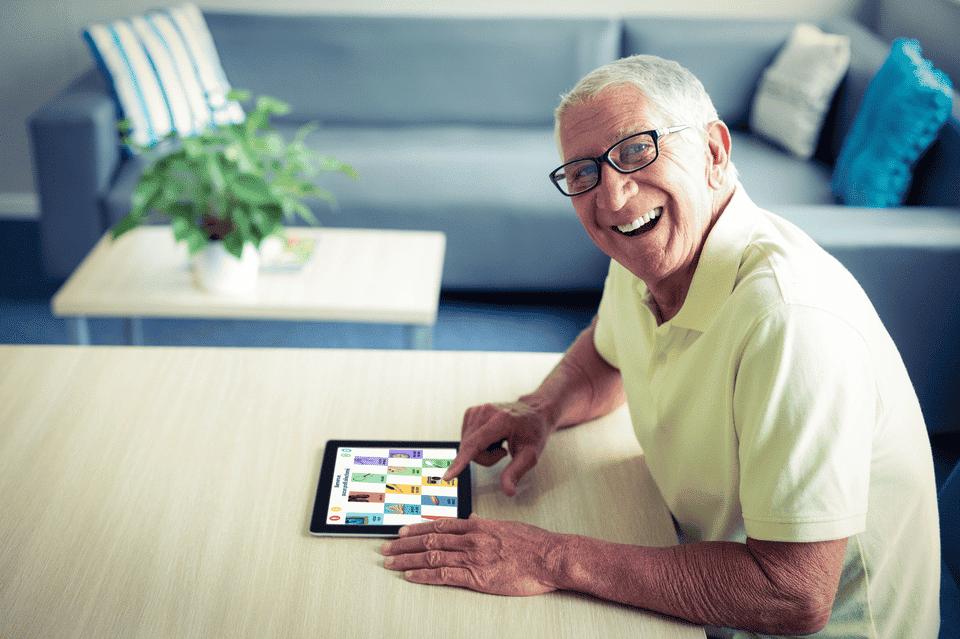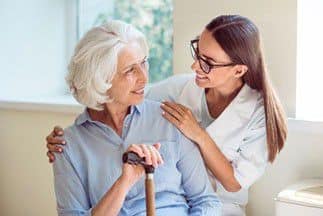Sarah has been a personal carer for a few years. She reveals the characteristics of her activities and how her passion for this job was born.
Some activities are confusing; what is the difference between a family caregiver, a nursing auxiliary and a personal carer?
A nursing auxiliary focuses mostly on hygiene and medical cares. While a personal carer helps the elderly to do everyday actions, so they can stay home with a satisfactory standard of living.
Why did you choose to become a personal caregiver?
It is mostly for the social aspect. It is what appealed to me. Meeting and helping people are something I find to be rewarding. Thanks to our daily activities, elderly people can stay home longer. I feel useful doing this job and I could never imagine having a desk job anyways. I like to move. I need change, I need diversity in my job. I cannot do the same thing all the time. My job has various tasks which keep me away from monotony.
Can you describe your work?
I do my best to help people in their daily tasks. My activities include all the daily actions, such as cleaning, ironing or going grocery shopping. I meet many elderly people who do not have their full cognitive and physical abilities.
Therefore, I often have to give them a hand by doing some administrative tasks. This involves filling out documents or carry packages. I sometimes do a bit of reading as well.
Wherever I go I always carry a tablet with the Stim’art app on it. With the app, I am sure to have fun memory games that are adapted to the elderly people.
It helps to have a good time with the seniors and to create a connection with them. They ask for it during each visit. It is pleasant to see they enjoy it and that it helps them.

Can you tell us about a working day?
I work 8 hours per day, from 8 a.m. to 4 p.m. My planning is entirely made by a social worker. Usually, I have to take care of four people every day: 2 in the morning and 2 in the afternoon.
Do you work alone or with a team?
I do my work alone at the person’s place. However, I work under the supervision of a social worker.

Considering all the activities, can we say it is an exhausting occupation?
Physically, this work can quickly become hard, even more, when you have to wash the people you help. The emotional aspect is probably the hardest part of it. Indeed, you cannot share moments and emotions with people without creating a bond, even more with elderly people. It is really tough to hear that a person you help died.
What makes a good personal caregiver?
First, a good caregiver has to like elderly people. Then, the caregiver needs to be patient, attentive, obliging and have empathy.
The Importance of Communication in Caregiving
Effective communication is crucial in the caregiving profession. It helps build trust and rapport with the elderly individuals. Here are some key aspects of communication in caregiving:
- Active Listening: Paying attention to what the elderly person is saying and responding thoughtfully.
- Non-Verbal Cues: Understanding body language and facial expressions to gauge emotions.
- Clear Instructions: Providing simple and clear directions to help them understand tasks.
- Empathy: Showing understanding and compassion towards their feelings and experiences.
Challenges Faced by Personal Caregivers
While being a personal caregiver can be fulfilling, it also comes with its own set of challenges. Some common challenges include:
- Emotional Strain: Dealing with the emotional ups and downs of the elderly can be taxing.
- Physical Demands: The job can be physically exhausting, especially when lifting or assisting individuals with mobility issues.
- Isolation: Working alone can lead to feelings of isolation and loneliness.
- Time Management: Balancing multiple clients and their needs can be challenging.
Skills and Training for Personal Caregivers
To excel in the role of a personal caregiver, certain skills and training are essential. Here are some important skills to develop:
- First Aid and CPR: Being trained in first aid and CPR can be lifesaving in emergencies.
- Understanding Medical Conditions: Knowledge about common ailments in the elderly helps in providing better care.
- Time Management: Efficiently managing time to meet the needs of multiple clients.
- Cultural Competency: Being aware of and respectful towards diverse backgrounds and beliefs.
The Role of Technology in Personal Caregiving
Technology has become an integral part of caregiving, enhancing the quality of care provided. Here are some ways technology aids personal caregivers:
- Health Monitoring Devices: Wearable devices that track vital signs and alert caregivers to any changes.
- Communication Tools: Video calls and messaging apps help maintain communication with family members.
- Medication Management Apps: Tools that remind elderly individuals to take their medications on time.
- Virtual Reality: Using VR for cognitive stimulation and engagement activities with seniors.

